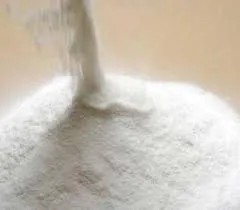
ຕ.ລ. . 10, 2024 07:37 Back to list
hpmc products
Understanding HPMC Products A Comprehensive Overview
Hydroxypropyl Methylcellulose (HPMC) is a widely used polymer derived from cellulose, a natural polymer obtained from plant cell walls. As a non-ionic cellulose ether, HPMC boasts unique properties that make it suitable for various applications across industries, particularly in pharmaceuticals, food, construction, and personal care. In this article, we will explore the characteristics, applications, and benefits of HPMC products, providing insights into their significance in modern manufacturing and consumer products.
What is HPMC?
HPMC is synthesized through the etherification of cellulose, where methyl and hydroxypropyl groups are introduced into the cellulose structure. This modification enhances its solubility in water and improves its overall functionality. Depending on the degree of substitution and the polymer's molar mass, HPMC can exist in various forms, ranging from powders to gels, each with distinct properties.
Key Properties of HPMC
1. Water Solubility One of the most notable properties of HPMC is its ability to dissolve in water, forming a viscous solution. This property is essential for its use as a thickening, binding, and film-forming agent in various formulations.
2. Viscosity HPMC can produce a wide range of viscosities, making it suitable for applications requiring specific thickness or flow characteristics. Its viscosity can be adjusted through formulation, allowing manufacturers to tailor products to specific requirements.
3. Stability HPMC is chemically stable and shows resistance to heat, acids, and alkalis, making it suitable for use in a variety of environments. This stability ensures consistency and reliability in product performance.
4. Non-Toxicity Being derived from natural cellulose, HPMC is considered safe for use in food and pharmaceutical applications. It is non-toxic and does not pose health risks when used appropriately.
5. Film Formation HPMC can create a flexible film when dried, which is advantageous in coatings and controlled-release formulations. This property allows for extended shelf life and improved product efficacy.
Applications of HPMC
Pharmaceuticals
In the pharmaceutical industry, HPMC is used as a binder, coating agent, and controlled-release excipient in tablet formulations. Its film-forming ability provides an effective coating that protects drugs from environmental factors while allowing for a controlled release of active ingredients, thus enhancing therapeutic effectiveness. HPMC is also utilized in the production of hydrophilic matrices for sustained drug delivery systems.
hpmc products

Food Industry
HPMC is commonly used as a food additive for its thickening and stabilizing properties. It can enhance the texture and mouthfeel of various products, such as sauces, dressings, and baked goods. Additionally, its ability to create a gel-like consistency makes it ideal for low-fat and gluten-free products, allowing manufacturers to meet consumer demand for healthier options.
Construction
In construction, HPMC is incorporated into mortars, plasters, and tile adhesives to improve workability and adhesion. Its water retention properties help maintain moisture in mixes, ensuring proper curing and reducing cracking. The use of HPMC in construction materials enhances durability and performance, making it a vital component in sustainable building practices.
Personal Care
The cosmetic and personal care industry also benefits from HPMC’s properties. It serves as a thickener and stabilizer in creams, lotions, and shampoos. Its film-forming capability provides a smooth application, while its non-ionic nature makes it suitable for sensitive skin formulations, as it does not irritate or interact negatively with other ingredients.
Benefits of Choosing HPMC Products
1. Versatility HPMC can be adapted for use in various applications, providing a wide range of functionalities and benefits across different industries.
2. Sustainability As a natural polymer, HPMC aligns with the growing consumer preference for eco-friendly and sustainable products. Its biodegradability and plant-based origins make it an appealing choice for environmentally conscious consumers.
3. Safety The non-toxic nature of HPMC ensures that it is safe for use in food and medical applications, meeting the stringent regulations set forth by health authorities.
4. Enhanced Product Quality By improving texture, stability, and delivery mechanisms, HPMC contributes to the overall quality and performance of end-products, benefitting manufacturers and consumers alike.
Conclusion
HPMC products represent a vital component in numerous industries, thanks to their unique properties and versatility. From pharmaceuticals to food and construction, the applications of HPMC are vast and varied, demonstrating its importance in modern manufacturing processes. As industries continue to evolve towards more sustainable and efficient practices, the demand for HPMC and its derivatives is likely to grow, solidifying its role as a crucial ingredient in a variety of formulations. Understanding HPMC can lead to more informed choices, benefiting manufacturers, consumers, and the environment alike.
-
Versatile Hpmc Uses in Different Industries
NewsJun.19,2025
-
Redispersible Powder's Role in Enhancing Durability of Construction Products
NewsJun.19,2025
-
Hydroxyethyl Cellulose Applications Driving Green Industrial Processes
NewsJun.19,2025
-
Exploring Different Redispersible Polymer Powder
NewsJun.19,2025
-
Choosing the Right Mortar Bonding Agent
NewsJun.19,2025
-
Applications and Significance of China Hpmc in Modern Industries
NewsJun.19,2025







